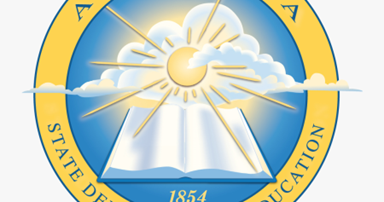What to know about Oklahoma's comprehensive new tutoring program for students – by William C. Wertz, The Oklahoman
Oklahoma students will soon be getting the most comprehensive tutoring program in the nation, says state schools Superintendent Ryan Walters.
On Monday, Walters announced the Oklahoma State Department of Education (OSDE) would be working with Varsity Tutoring for Schools, a St. Louis company that bills itself as "the premier platform for live online tutoring."
The announcement said the state Education Department was "working with several large districts and districts that currently operate expanded learning grant sites to expand tutoring for students." Walters did not specify which districts were involved, but a spokesperson for Tulsa Public Schools said the district is "engaging in productive, ongoing conversation with the OSDE. Conversation has included mention of potential incentives for tutors and teachers to support schools with opportunity for improvement."

Alabama updates required high school personal finance course – By Tricia Powell Crain, AL.com
Alabama’s high school students will learn a little bit more about personal finance after the state Board of Education approves changes to a required course.
Alabama requires high school students to take a career preparation course at some point in high school. It already has some financial literacy modules, but schools will need to beef up instruction about taxes.
Rep. Andy Whitt, R-Harvest, who told lawmakers that as a community banker for the past 30 years, has seen a decline in people who understand the basics of personal finance. The law was passed in May.
The bill received unanimous approval in both chambers and is effective for students in the ninth grade as of the 2024-25 school year. That’s this year’s eighth graders.
State Superintendent Eric Mackey told board members that implementing the law won’t be difficult. “We already require career prep as a graduation requirement,” Mackey said. He said the current course was “pretty close” to what the law requires.

Wyoming’s child care industry could get a $15 million boost – By Hanna Merzbach, KHOL
The Biden Administration called on Congress last week to approve emergency funding for childcare.
If the plan garners enough support, Wyoming’s child care industry could see an infusion of $15 million.
Dee Buckstaff, who owns the Montessori School of the Tetons, said that extra money is needed with rising costs.
“I'm very concerned about having to raise my rates next year,” Buckstaff said, as the Jackson school’s 20-some kids were having snack time.
Located in a town grappling with an affordability crisis, the facility’s rent is going up 20 percent, she said.
“I feel like I already charge parents so much money. I don’t know how they can possibly afford child care,” Buckstaff said. “But I also don't know what else to do. I have to pay my staff. I have to pay my rent.”

Cedar Rapids schools’ new model keeps students together from kindergarten to high school – By Grace King, The Gazette
Three new chiefs of Cedar Rapids schools are helping principals “grow as leaders” and hoping for better student outcomes under a new feeder school model implemented in the district this year.
The chiefs each oversee one of three “areas” that include elementary schools, middle schools and high schools in the Cedar Rapids Community School District. Under the model, students in elementary school will continue to the same middle school and eventually to the same high school as their classmates — creating a more cohesive learning experience, educators say.
“We love the fact that kids are going to be going to school together with their peers and take that educational journey together. It’s very comforting and going to make them feel like they belong,” said Comfort Akwaji-Anderson, who oversees Area 1.
Under this model, students will be going to school together “for a long period of time,” Akwaji-Anderson said. This can help educators better monitor the progress of each class and “deeply understand” their strengths, see what challenges the students face and find ways to address those, she said.












